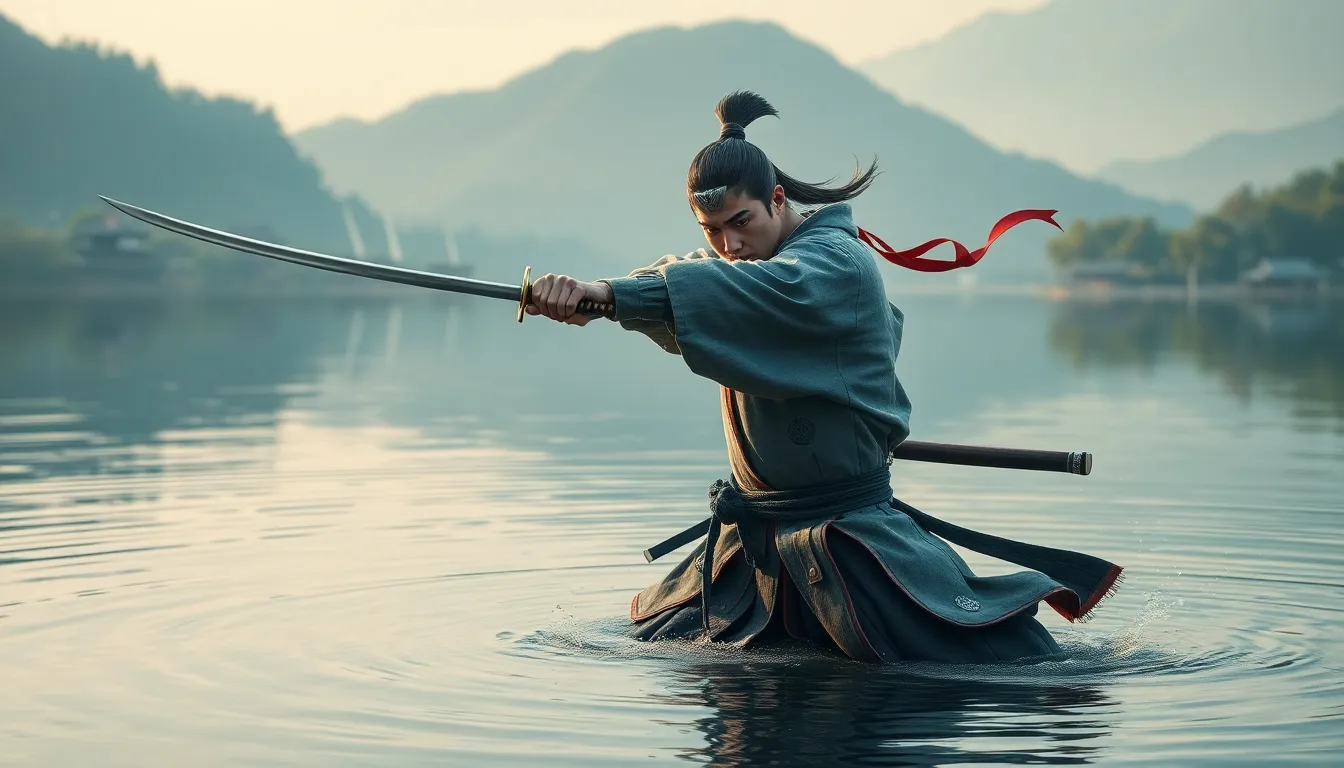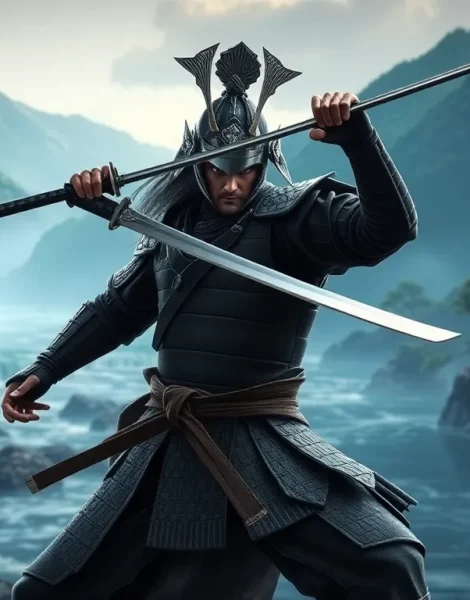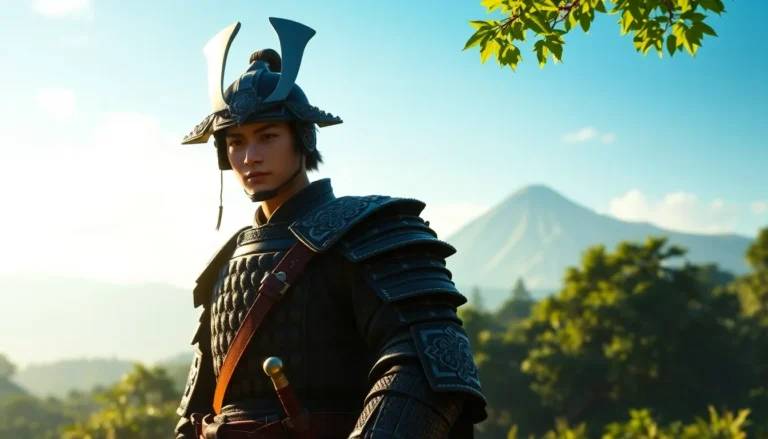In the stunning world of Ghost of Tsushima, players find themselves immersed in a breathtaking landscape filled with samurai honor and treacherous foes. Among the many combat techniques Jin Sakai masters, the Water Stance stands out like a cherry blossom in full bloom. It’s not just a flashy move; it’s a game-changer that can turn the tide of battle faster than a rogue wave crashing on the shore.
Picture this: you’re surrounded by enemies, swords drawn, and panic starts to set in. But wait! With the Water Stance, Jin glides through the chaos like a fish in a stream, effortlessly deflecting attacks and striking back with precision. This stance isn’t just about looking cool; it’s about strategy, fluidity, and that satisfying feeling of outsmarting your opponents. Dive in as we explore the art of the Water Stance and why it’s essential for any aspiring samurai.
Table of Contents
ToggleOverview of Ghost of Tsushima Water Stance
The Water Stance in “Ghost of Tsushima” represents a crucial combat technique in Jin Sakai’s arsenal. This stance excels against multiple opponents, allowing Jin to maintain mobility while executing swift attacks. Users of the Water Stance can reduce incoming damage and improve their defensive capabilities, making it an ideal choice in chaotic battles.
Moreover, the Water Stance utilizes fluid movements that mirror the nature of water, enhancing Jin’s agility. Engaging enemies in this stance offers a strategic advantage, as it effectively counters aggressive sword strikes and rapid attacks. Mastery of the Water Stance facilitates smoother transitions between offensive and defensive maneuvers, leading to a well-rounded combat style.
Players can observe that this stance not only enhances Jin’s aesthetic appeal but also embodies the samurai ethos of adaptability and balance. Effectively using the Water Stance requires precise timing and awareness of enemy actions. Combat scenarios become more manageable when players leverage this technique against foes wielding swords.
In addition, accumulating mastery points in the Water Stance unlocks special abilities that further empower Jin. These enhancements can turn a seemingly perilous fight into a manageable duel, illustrating the stance’s versatility. Players who focus on the Water Stance often find themselves better equipped to confront various challenges throughout the game.
Overall, the Water Stance is an essential aspect of Jin’s combat mechanics. Its emphasis on adaptability and agility makes it indispensable for anyone looking to excel in “Ghost of Tsushima.” Understanding the intricacies of this stance significantly affects the player’s overall performance and enjoyment of the game.
Importance of Stances in Combat

Stances play a crucial role in combat, affecting strategies and overall effectiveness in encounters. In “Ghost of Tsushima,” each stance offers unique advantages, particularly the Water Stance, which enhances Jin’s combat adaptability.
Benefits of Water Stance
Water Stance provides multiple benefits that elevate Jin’s combat prowess. This stance excels against groups of enemies, allowing for smooth movements that enhance both offense and defense. It minimizes incoming damage while facilitating quick counters, making it ideal for frenetic battles. Players notice improved agility through fluid movements that mimic water, creating opportunities to dodge and strike. The ability to unlock special skills as mastery increases transforms difficult confrontations into manageable ones. Effective utilization of Water Stance allows Jin to maintain an upper hand against opponents.
Comparison to Other Stances
Water Stance stands apart from other stances, each designed for different combat scenarios. While the Stone Stance focuses on delivering powerful, single blows effective against heavily armored foes, the Water Stance emphasizes agility and adaptability. The Wind Stance offers advantages against fast, lighter enemies, complementing the Water Stance’s ability to maneuver through chaotic situations. Players appreciate that mastering multiple stances allows for a versatile combat style, enabling Jin to tackle various challenges seamlessly. Comparatively, the adaptability of the Water Stance creates a fluid transition between offense and defense, enhancing Jin’s overall combat effectiveness.
Techniques and Moves in Water Stance
The Water Stance features a set of effective techniques designed for dynamic combat. This stance offers a range of key attacks that excel in both offense and defense.
Key Attacks
Water Stance introduces several powerful attacks. The Water Slash delivers swift, wide strikes that can hit multiple enemies, creating opportunities for follow-up attacks. Another significant move, the Riptide, enables quick strikes against opponents’ blades, disarming them and leaving them vulnerable. The Flowing Cut enhances mobility, allowing players to reposition while delivering damage. Players can seamlessly combine these moves to unleash devastating combos. Mastering these key attacks elevates Jin’s combat prowess, especially in chaotic battles with multiple foes.
Counter Moves
The Water Stance incorporates effective counter moves essential for defensive play. A successful parry, executed at the right moment, allows Jin to counter-attack immediately, creating openings for additional damage. The Water Dance serves as another crucial counter, allowing Jin to evade incoming strikes while delivering retaliation. Notably, these counter moves require precise timing and awareness, adding depth to the gameplay. When players master these techniques, they enhance their overall versatility and survivability in intense encounters.
Strategies for Using Water Stance
The Water Stance presents unique strategies that enhance combat proficiency in “Ghost of Tsushima.” This stance thrives in chaotic fight scenarios where multiple foes pose a threat.
Ideal Scenarios for Water Stance
Water Stance excels against groups of enemies. When facing several opponents, it facilitates fluid movements that allow Jin to dodge strikes and retaliate quickly. Engaging aggressive foes suits this stance, as it provides opportunities for counterattacks and evasion. Additionally, players find success using Water Stance against sword-wielding enemies, as the stance effectively counters their attacks. It stands out during encounters requiring movement and berates due to its agility-boosting benefits. On narrow terrain or tight spaces, such scenarios demand adaptability, where Water Stance becomes invaluable.
Tips for Mastery
Mastery of the Water Stance demands practice and timing. Players should focus on the flow of attacks, transitioning seamlessly between offensive combos and defensive maneuvers. Observing enemy patterns aids in executing the crucial parries and counterattacks. Prioritize learning the moves, such as Water Slash and Flowing Cut, to create devastating combinations. Timing plays a crucial role in executing perfect counters that turn aggressive strategies back on opponents. Experimenting with different combinations enhances adaptability and keeps combat dynamic. Lastly, utilizing mastery points effectively unlocks powerful abilities that elevate the Water Stance’s prowess, providing an edge during hair-raising battles.
The Water Stance in “Ghost of Tsushima” is more than just a combat technique; it embodies the essence of adaptability and fluidity. Mastering this stance not only enhances Jin’s combat effectiveness but also allows players to navigate the complexities of battle with finesse.
Its unique moves and strategies empower players to turn chaotic encounters into opportunities for victory. By prioritizing practice and understanding enemy patterns, gamers can fully exploit the advantages that the Water Stance offers.
In a world where every decision counts, embracing the Water Stance is key to mastering the art of combat in this breathtaking samurai epic.









